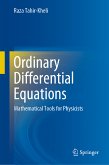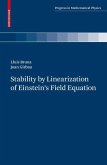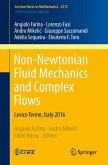First and foremost, this book mathematically derives certain common fluid models from more general models. Although some of these derivations may be well known to physicists, it is important to highlight the assumptions underlying the derivations and to realize that some seemingly simple approximations turn out to be more complicated than they look. Such approximations are justified using asymptotic analysis wherever possible. Furthermore, efficient simulations of multi-dimensional models require precise statements of the related systems of partial differential equations along with appropriate boundary conditions. Some mathematical properties of these systems are presented which offer hints to those using numerical methods, although numerics is not the primary focus of the book.
Dieser Download kann aus rechtlichen Gründen nur mit Rechnungsadresse in A, B, BG, CY, CZ, D, DK, EW, E, FIN, F, GR, HR, H, IRL, I, LT, L, LR, M, NL, PL, P, R, S, SLO, SK ausgeliefert werden.
"This work is an important bridge between mathematical rigor and practical application, useful for research and simulation experts needing to reevaluate their PDE analyses and assumptions for complex plasma systems. Applied mathematicians will also find this work to be a stimulating introduction to the riches of plasma physics, including the open problems discussed. Summing Up: Recommended. Graduate students through professionals/practitioners." (T. Eastman, Choice, Vol. 52 (3), November, 2014)




